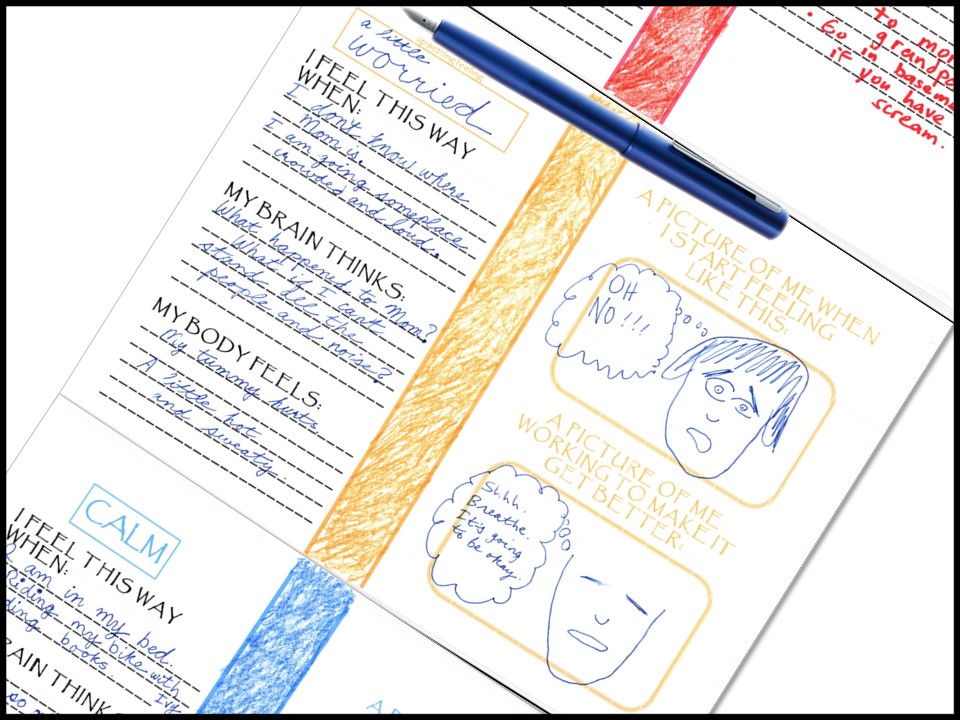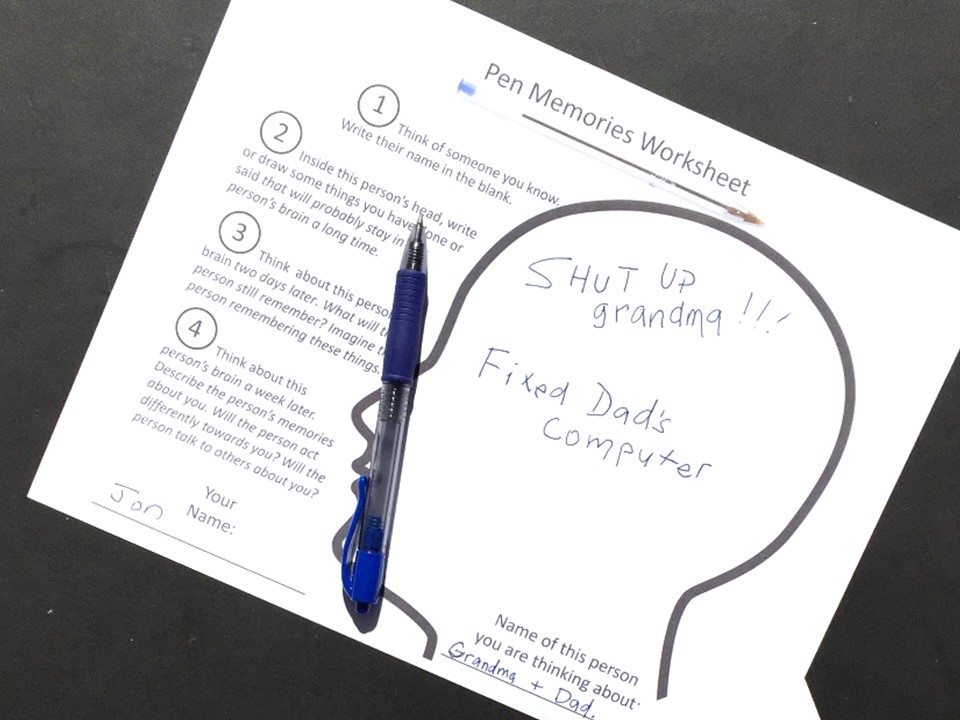Why should teachers and therapists have a child on the autism spectrum color and draw while trying to help them with social and emotional skills? Please see Part 1, where I spell out some of the reasons.
There are so many ways to engage children in therapy by asking them to draw something.
Here are a few examples from among the free downloads on this website and my published children’s books. Click on the blue text to access resources.
Head Outline Picture Activity to learn about peer interests [drawing option]
This activity also comes in another version requiring no drawing. In that alternative version, you use my prepared PowerPoint download and then copy and paste internet images into the head outline. When you try this activity, you select one option or the other based on the child’s preference and how much time you can devote to this project.
Problem & Solution Cards [drawing option]
Children experiencing multiple social and emotional challenges can feel demoralized by being the “problem child” all the time. One way to help is to show our young clients how to externalize some of their problems onto fantasy characters which we can help them to fight against. Then, we can show children how to create solution “hero” characters representing various ways children can help themselves.
This resource is also available in a much quicker-to-implement version in which you drag and drop stock fantasy images to create the cards. Which option you select depends on how much time you have available and the child’s inclination.
Light Force Dark Force drawing worksheets

This is an earlier version of the Problem and Solution Cards.
Seven social skills worksheets for children who are isolated
On a couple of these worksheets, there is an option to draw small pictures. When I use these worksheets, many kids do select the option of drawing.
Fantasy Obsession worksheets & checklists with drawing options
This drawing activity is part of a large group of free resources to help raise a child’s awareness of how they are affected, in both helpful and potentially harmful ways, by various kinds of fantasy and pretend. Given the option of writing down words or drawing, on this worksheet many children opt to draw or to combine both writing and drawing.
What I Should Have Done Different worksheet
This simple, one-page worksheet is designed to facilitate reflection and retrospective problem solving. Children, when given the option of drawing on it, frequently do so.
Page 1 of seven-page CBT Worksheets
When I use these worksheets with children, at least half the time children go on to page two and skip the drawing. Other children dwell on the task of drawing their face. This seems to help them to recall the incident and what they were feeling at the time.
This set of emotion thermometers requires coloring and there is the option of drawing small pictures.
Pencil Memories, Pen Memories worksheets
This set of worksheets is to help children to think about social cause and effect, and how their words and actions might be remembered by others for a short time or a long time. Children can opt to either draw, or write, or both.
Examples of drawing worksheets from my published books
My six published children’s books contain lots of worksheets, some of which involve the option of drawing. Here are a few examples.
Social cause & effect worksheet from Our Brains are Like Computers
Writing/drawing worksheet from The ASD Feel Better Book
Drawing/writing worksheet from Your Interests, My Interests
The next in this series is: Part 3: Assigning collaborative drawing tasks for social learning.
Joel Shaul, LCSW
Part 2: Assigning individual drawing tasks for social & emotional learning.
Part 3: Assigning collaborative drawing tasks for social learning.
Part 4: Coloring & decorating to add interest & levity to social & emotional learning.
Part 5: Creative use of others’ images and AI for social & emotional learning.
Part 6: Encouraging & validating the child’s own artistic expression in therapy & teaching.












